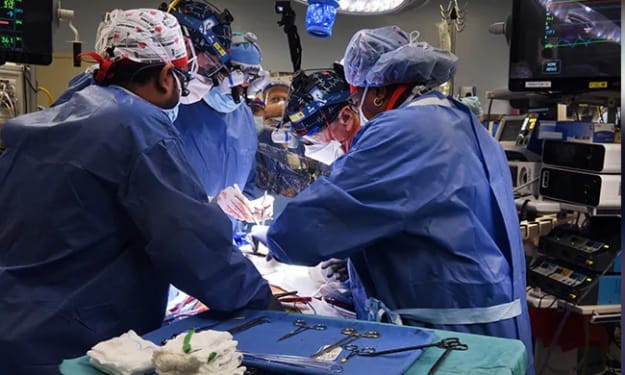The Impact of Breast Reduction Surgery on Breastfeeding
A Comprehensive Analysis

The mammary glands are intricate structures unique to female mammals, responsible for the production and secretion of milk to nourish offspring during lactation. Beyond their role in sustenance, these glands are also vital for maternal bonding and infant development. Understanding the anatomy and physiology of the mammary glands illuminates their remarkable complexity and highlights their crucial functions in reproductive biology.
Anatomy of the Mammary Glands
Lobes and Lobules: Each breast contains 15-20 lobes, further subdivided into smaller lobules. These lobules are the primary functional units responsible for milk production. They consist of clusters of alveoli, which are hollow, sac-like structures lined with milk-secreting epithelial cells.
Lactiferous Ducts: The alveoli are interconnected by ductules that converge into larger lactiferous ducts. These ducts transport milk from the alveoli to the nipple, where it is released during breastfeeding.
Areola and Nipple: Surrounding the nipple is the areola, a pigmented area containing sebaceous glands that secrete lubricating oils. The nipple itself contains numerous openings (orifices) where milk is ejected during nursing.
Clinical and Developmental Significance
Understanding the anatomy and physiology of mammary glands is crucial in clinical settings and developmental biology:
Breastfeeding Support: Knowledge of mammary gland anatomy aids lactation consultants and healthcare providers in assisting breastfeeding mothers, addressing challenges such as latch difficulties or inadequate milk supply.
Breast Health: Awareness of mammary gland structure underpins diagnostic imaging techniques (e.g., mammography, ultrasound) and surgical interventions for breast conditions, including cancer.
Reproductive Biology: Studying mammary gland development and function enhances our understanding of reproductive processes, hormonal regulation, and maternal-infant interactions in mammalian species.
The mammary glands exemplify the intricate relationship between anatomy and function in mammalian biology. From their complex structure of lobes and ducts to the finely tuned hormonal regulation of milk production, these glands play a pivotal role in maternal and infant health. Advancements in understanding mammary gland physiology continue to enrich our knowledge of lactation, reproductive biology, and clinical care, underscoring their significance in both human and animal physiology.
The Impact of Breast Reduction Surgery
Breast reduction surgery, medically termed reduction mammoplasty, is a surgical procedure designed to alleviate physical discomfort and improve quality of life for women with disproportionately large breasts. While this surgery can bring significant relief, it raises concerns regarding its potential impact on breastfeeding, a natural process crucial for infant nutrition and bonding. To grasp the implications fully, it's essential to explore the intricate anatomy and physiology of the mammary glands and understand how surgical interventions may alter these vital structures.
Surgical Techniques and Anatomical Alterations
Reduction mammoplasty involves the removal of excess breast tissue, fat, and skin to achieve a more proportionate breast size. The specific techniques used vary but generally include:
Glandular Tissue Resection: Depending on the surgical approach and individual anatomy, glandular tissue may be partially removed, particularly from the lower and outer aspects of the breast where excess tissue is typically concentrated.
Ductal Management: Preservation and manipulation of lactiferous ducts, which carry milk from the lobules to the nipple, are critical considerations. Ducts may be repositioned or transected inadvertently during surgery, potentially affecting milk flow.
Nipple-Areolar Complex Management: Repositioning of the nipple and areola complex is common to achieve aesthetic balance. This may involve severing and reattaching nerve pathways and altering the natural orientation of the nipple, which can influence sensory perception and breastfeeding mechanics.
Potential Impacts on Breastfeeding
The anatomical changes induced by breast reduction surgery can impact breastfeeding in several ways:
Milk Production Capacity: Reduction in the volume and distribution of glandular tissue reduces the breast's overall milk production capacity. The number and size of functional alveoli, responsible for milk synthesis, may be diminished, potentially leading to inadequate milk supply.
Ductal Integrity: Surgical manipulation of lactiferous ducts can disrupt the continuity required for efficient milk transport to the nipple. Ductal damage or obstruction may impede milk ejection reflex and interfere with milk flow during breastfeeding.
Nipple Sensation and Functionality: Alterations in nipple position, nerve supply, and sensation can affect the infant's ability to latch effectively. Sensory feedback plays a crucial role in stimulating milk release and maintaining breastfeeding frequency and duration.
Considerations and Recommendations
Women considering breast reduction surgery should be aware of these potential challenges:
Preoperative Counseling: Consultation with a qualified surgeon experienced in breast surgeries is essential. Discussing future breastfeeding goals allows for a comprehensive assessment of surgical options, potential risks, and expected outcomes.
Postoperative Support: For women who undergo breast reduction surgery and wish to breastfeed, early lactation support is crucial. Working with lactation consultants and healthcare providers skilled in managing breastfeeding challenges post-surgery can enhance success rates.
Alternative Feeding Strategies: In cases where breastfeeding is compromised, supplementary feeding options such as pumped breast milk or formula may be necessary to ensure adequate infant nutrition.
Breast reduction surgery offers significant benefits in terms of physical and psychological well-being for many women. However, its potential impact on breastfeeding underscores the importance of informed decision-making and comprehensive preoperative planning. With appropriate surgical techniques and postoperative support, many women can achieve successful breastfeeding after breast reduction surgery despite anatomical alterations. Empowering women with knowledge about these considerations enables them to make informed choices that align with their health and parenting goals.
About the Creator
Nazmi Baycin
Dr. Nazmi Baycin is a board certified plastic surgeon. As the head plastic surgeon, he has performed more than 7000 surgeries. He specializes in all procedures within the field of plastic surgery in Dubai.
Enjoyed the story? Support the Creator.
Subscribe for free to receive all their stories in your feed. You could also pledge your support or give them a one-off tip, letting them know you appreciate their work.






Comments
There are no comments for this story
Be the first to respond and start the conversation.